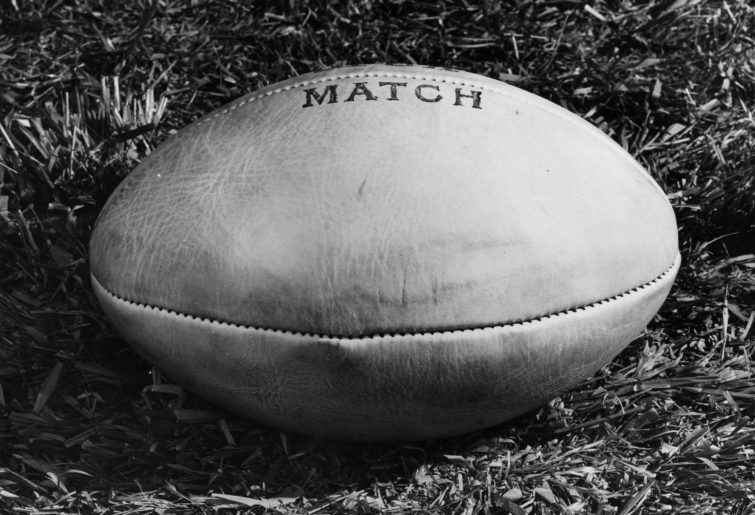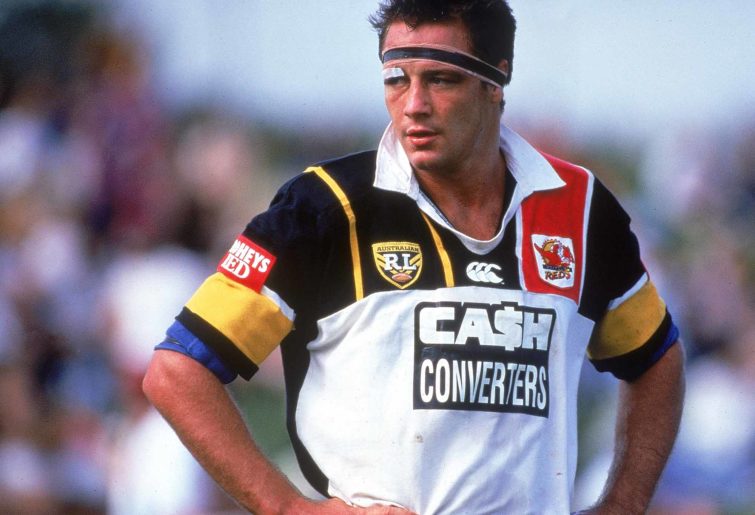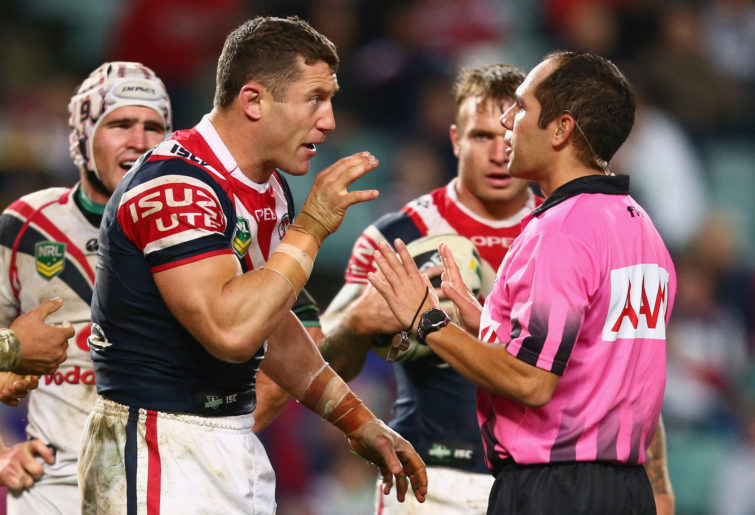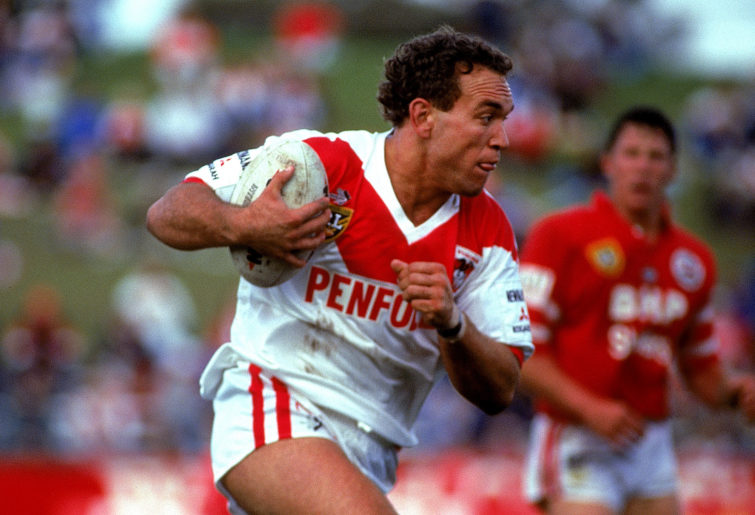Ever since the rugby league dinosaurs first roamed the earth back in 1908, there has been a brand of player who took it upon themselves to try to gain the ascendency for their team by, let’s face it, belting the opposition into submission, by fair means or foul.
They ruled the paddocks with an iron fist (elbow, knee or whatever else was handy) until another hired gun came to town to challenge their superiority.
They ensured that their team’s more talented players were protected from harm, while at the same time terrorising any opponent who posed a threat to their own team’s success.
These players didn’t like the opposition one little bit. They were the mafia hitmen of the sport. The hired guns. The bullies. The henchman. These players were, and are, the enforcers.
In the era of the biff, the game had a softening up period, approximately the first quarter of the match when players seemingly had a 007 licence to kill, and go after the opposition without any fear of interference by either the referee or the judiciary.
The enforcers owned the softening up period, although the best of their breed managed to maintain the mayhem until either the full-time whistle sounded, or the referee finally gathered up the courage to send them for an early shower.
Some teams didn’t limit themselves to just one or two enforcers though. The invincible Dragons team of the mid 1950s to mid 1960s had a host of them (Billy Wilson, Kevin Ryan, Ken Kearney, Brian Clay) and deliberately gave the ball to the opposition so that they could knock the stuffing out of them. This pack mentality didn’t end with the Dragons’ 11-year run either, as both Souths and Manly followed suit and stacked their teams with enforcers in the ’70s.

(Photo by Fox Photos/Getty Images)
Over time, the good old days of open slather came under threat as the game was forced to modernise itself, and present a more civilised viewing experience to the game’s ever widening fan-base. Jim Comans took charge of the rugby league judiciary in the early 1980s and did his best Wyatt Earp impression in trying to clean up the game.
Improving TV coverage and replay technology increasingly brought the dark deeds out into the light of day. The punch and shoulder charge were officially banned. The match review committee began to take a very dim view of violent and illegal play, and the Bunker had the ability to catch offenders in real time.
The days of the enforcers are now well and truly numbered, if not gone already. So before they disappear altogether, forever to be replaced by the face slapping, name calling and push-and-shove confrontations of the modern game, let’s take a little time to remember some of the more ferocious players to take the field.
Yes, many of them would be considered violent thugs and cheap shot merchants by today’s standards, and be quickly rubbed out of the game. But like soldiers sent into battle, they did what was expected of them at the time, in accordance the prevailing rules of engagement.
Here are my top twenty enforcers (in alphabetic order) to play the game in Australia since 1970.
Les Boyd (1976-1989)
A very affable character off the field apparently, but a ruthless and volatile player on it. Boyd was one player you didn’t want to see on the opposition team sheet, and violence was his constant companion once that opening whistle blew. Infamous for that elbow on Darryl Brohman, a series of long suspensions eventually saw Boyd head to England to finish his career, and no doubt settle some more scores.
Mark Carroll (1987-1999)
Big, fearless and ruthless – that pretty much describes Mark Carroll, who was one of the most intimidating hitmen of his day. His clashes with Paul Harragon and anyone wearing a Maroon jersey were legendary, and it’s no surprise that he later found employment as a personal minder to Russell Crowe.

(Photo by Getty Images)
Michael Crocker (2001-2013)
He was an extremely talented and versatile player who took it upon himself to let the opposition know that they were in for a torrid time while he was on the field. He was awarded life membership at the NRL judiciary after being charged by them some 13 times in his career.
Les Davidson (1984-1998)
I laugh when I see some of the current and ex-footballers getting into the ring these days to earn some easy cash. I can guarantee they wouldn’t be climbing through the rope if Davidson was waiting for them in the blue corner. He had a lot of skill, but really loved to intimidate the opposition, and he was very good at it.
John Donnelly (1975-1984)
In the late 1970s Roy Masters’ Wests team of fibro-dwelling battlers had one of the most lethal (make that violent) forward packs seen in the competition, and the leader of the gang of destruction was John Donnelly, who took personal exception to not only those he encountered in the scrum, but any opponent who chose to run the ball in his direction. Like many others on this page, Donnelly was on first-name terms with the judiciary panel and was on the receiving end of some lengthy suspensions in his time.
Mark Geyer (1986-2000)
At 195 centimetres and 110 kilos, Mark Geyer was a big weapon, but with a short and explosive temper. Geyer loved nothing more than levelling opposing ball carriers with his signature hits, and was never far from the action when tempers frayed beyond the point of no return. Just ask Wally Lewis. Controversy seemed to follow him, and it was only some untimely suspensions that limited his representative career.

(Photo by Getty Images)
David Gillespie (1984-1997)
Gillespie was never the biggest forward on the paddock but there was no more feared defender to ever take the field. Anyone who ran the ball at him soon regretted it, and I don’t recall any opponent taking him on with any hope of success. Tough, mean and ruthless – that was David Gillespie.
Paul Harragon (1988-1999)
He was Newcastle’s captain courageous and one of the toughest competitors to go around for both NSW and Australia. He never took a backward step on the field and ran a protection racket for his team’s little men. He loved a stoush, particularly when Mark Carroll was involved, and was a force to be reckoned with when things kicked off.
Peter Kelly (1982-1990)
Kelly didn’t play as much representative footy as some others on this page, but boy didn’t he love to run amok on the field. He was not the biggest of front rowers, but certainly one of the meanest, and he owned the ruck area and the front row of the scrum. He was player of the match in Canterbury’s back-to-back grand final wins in 1984 and 1985 and his opponents in those games won’t forget him any time soon.
Steve Kneen (1976-1982)
He was a wild man by any definition who took a real dislike to the opposition nearly every time he ran out onto the field. It was a race between suspensions and injury to bring his career to an end.
Adrian Morley (1995-2015)
He was a fearsome giant who spent two decades terrorising the opposition. He (proudly) holds the record for the fastest send off in a Test match at 12 seconds. Morley only spent six seasons in Australia, but still managed to notch up suspensions totalling 26 weeks in that time.
Luke O’Donnell (1999-2013)
O’Donnell was sin binned in his debut match in 1999 and the writing was on the wall, as he went on to be suspended for a total of over 30 weeks during his career. He was one of the toughest players to play the game and also notorious for not taking any prisoners. He had a genuine dislike for anyone on the other side of the ruck.

(Photo by Mark Kolbe/Getty Images)
John O’Neill (1965-1976)
To stand out as the most feared player in the South Sydney pack of the late ’60s took some doing, but that was John O’Neill. He established a reputation as one of the toughest and most ruthless forwards in the game, firstly with Souths and then with Manly, and was a go-to selection for Australia in the trench warfare games against England.
Terry Randall (1970-1982)
Put simply, Randall was one of the most destructive defenders the game has seen and no one was safe when they were playing Manly in the ’70s. Opposition forwards and backs alike, they all looked up to check where Randall was when they received the ball.
Rod Reddy (1972-1989)
Reddy was easily the best player in the world while at the peak of his powers and also one of the most brutal players to ever take the field. He was always heavily marked by the opposition and decided to do unto others before they do unto you. Somehow he avoided being either sent off or suspended too often, despite his continued ruthless disregard for the rule book.
Malcolm Reilly (1967-1986)
Reilly was a Castleford and Manly legend, and one look at his face will tell you the way he played the game. No quarter was asked for or given. Reilly was both extremely gifted, and a ruthless competitor, and a believer in the motto of ‘anything goes’. Some of his performances for both Manly and the English Test team wouldn’t qualify for a general admission censor’s rating these days.
Steve Roach (1982-1992)
No one owned the centre of the ruck like the fiery Steve Roach. He was like a skilful bull in a china shop, never far from controversy, and always happy to accommodate any would be hard men from the opposition. He held the Balmain side together through thick and thin. He was always entertaining to watch from the safety of the grandstand, particularly when he went into meltdown mode.
Gorden Tallis (1992-2004)
There have been few forwards as dominant as Tallis in the last 30 years and he played the game with both passion and barely controlled aggression. He saved his most brutal work for both NSW and the Poms, loved confrontation, never took a backward step, and knew how to handle himself. Looking back, I can’t think of any opponent who got the better of him.

(Photo by Getty Images)
Cliff Watson (1960-1973)
He was an English hard man with a face only his mother could love. Watson was a master of intimidation, and he will long be remembered not only for the dark deeds done in the name of Queen and country, but also for his ferocious performance against Manly in the 1973 grand final. He was never a stranger to having first use of the showers, and a leading exponent of the Liverpool kiss.
Carl Webb (2000-2011)
When it was time to get down and dirty with the opposition, Carl Webb was your man. A noted strong-arm player, Webb played right on the edge of the rule book and to hell with the consequences. He was an Origin specialist when fit, and really didn’t like anyone wearing a blue jersey.
Some other noted enforcers who wouldn’t look out of place above include Geoff Robinson, James Graham, Paul Gallen, Nev Hornery, John Harvey, Jared Waerea-Hargreaves, Terry Regan, David Furner, Ruben Wiki, Steve Bowden, Ron Hilditch, Greg Dowling, Josh McGuire, Andrew Gee, John Baker, Ron Gibbs, Beau Scott, Jeremy Smith, Mark Broadhurst, Steve Simpson, Kevin Ward, Greg Bird, Adam Blair, Monty Betham, George Piggins, Paul Sait and Sam Burgess.

































































































